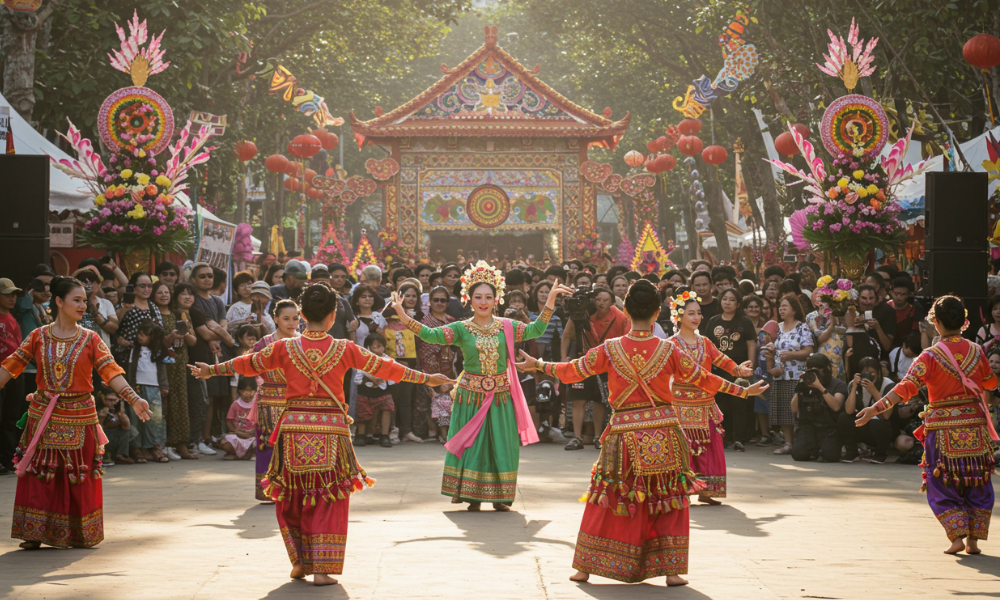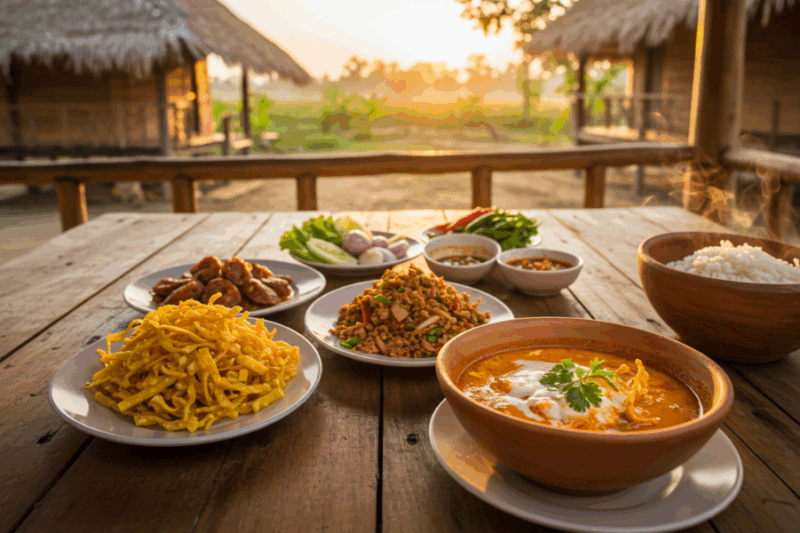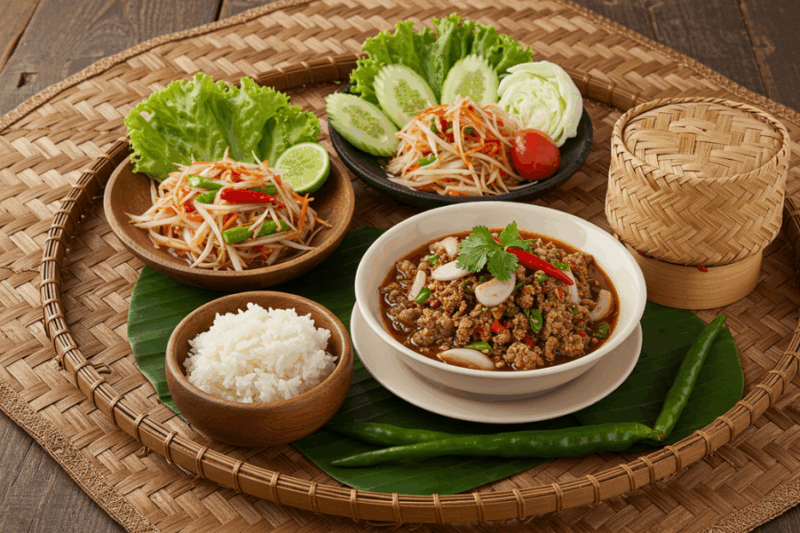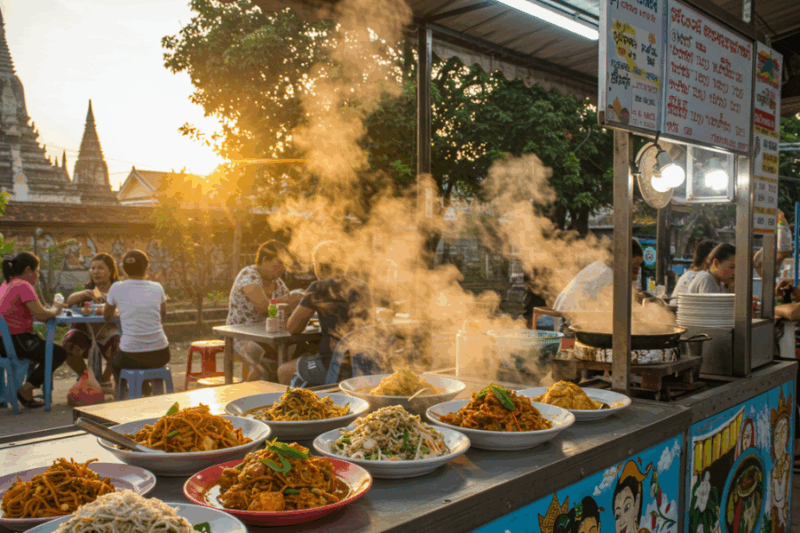Asia’s vibrant cultural tapestry comes alive through its festivals, blending ancient traditions, spirituality, and modern celebrations. These events offer travelers a chance to immerse themselves in local customs, food, and community spirit. Here are seven must-see cultural festivals in Asia for 2025, each worth planning your trip around, with practical tips to make the most of your experience.

1. Diwali – India (October/November)
What It Is: Known as the Festival of Lights, Diwali celebrates the victory of light over darkness and good over evil in Hindu culture. Homes glow with oil lamps (diyas), families share sweets, and fireworks light up the skies.
Where: Nationwide, but Varanasi offers spiritual rituals along the Ganges, while Jaipur dazzles with illuminated markets.
When: Likely October 29-November 2, 2025 (dates vary by lunar calendar).
Highlights: Join locals in lighting diyas, sample sweets like laddu ($1-2), and shop at bazaars. In Varanasi, witness Ganga Aarti ceremonies.
Travel Tips: Book accommodations 3-6 months ahead (guesthouses $10-30/night). Dress modestly for temple visits. Expect crowds and book trains via IRCTC early.
Cost: $30-50/day (food, transport, activities).
Local Tip: Try street food like jalebi at local stalls but choose busy vendors for hygiene.
2. Songkran – Thailand (April 13-15)
What It Is: Thailand’s traditional New Year, Songkran is famous for massive water fights symbolizing cleansing and renewal. Locals also visit temples and pour water on Buddha statues.
Where: Chiang Mai for traditional parades; Bangkok for lively street parties in Silom or Khao San Road.
When: April 13-15, 2025.
Highlights: Join water fights with super soakers ($2-5), attend temple ceremonies at Wat Pho, and enjoy street food like pad thai ($1-3).
Travel Tips: Book hotels early ($15-40/night). Wear quick-dry clothes and waterproof bags. Use tuk-tuks ($2-5) or Grab for transport.
Cost: $25-50/day.
Local Tip: Respect elders by gently pouring water on their hands, a traditional gesture.
3. Cherry Blossom Festival (Hanami) – Japan (March/April)
What It Is: Hanami celebrates spring’s cherry blossoms, with picnics under blooming trees, traditional music, and illuminated night views (yozakura).
Where: Tokyo (Ueno Park), Kyoto (Maruyama Park), or Osaka (Osaka Castle).
When: Likely late March to early April 2025 (varies by region; check Japan Meteorological Agency forecasts).
Highlights: Picnic with bento boxes ($5-10), sip sake ($3-5), and visit temples like Kyoto’s Kiyomizu-dera.
Travel Tips: Reserve hotels 6 months ahead ($30-100/night). Book JR Pass ($300/7 days) for intercity travel. Carry cash for small vendors.
Cost: $50-100/day.
Local Tip: Visit less crowded spots like Nakameguro Canal in Tokyo for a serene experience.
4. Lunar New Year – China (January/February)
What It Is: Marking the lunar calendar’s start, Lunar New Year (or Chinese New Year) features dragon dances, red lanterns, and family feasts. Each year honors a zodiac animal (2025 is the Year of the Snake).
Where: Beijing for temple fairs; Hong Kong for fireworks over Victoria Harbour.
When: Likely January 28-February 2, 2025.
Highlights: Watch lion dances, eat dumplings ($2-5), and explore markets like Ditan Park in Beijing.
Travel Tips: Book flights and hotels 3-6 months ahead ($50-150/night). Use WeChat Pay for transactions. Expect closures; plan dining in advance.
Cost: $40-80/day.
Local Tip: Learn “Gong Xi Fa Cai” (wishing you prosperity) to greet locals.
5. Boryeong Mud Festival – South Korea (July)
What It Is: A playful summer festival where locals and visitors slather mineral-rich mud for skin health, enjoy mud wrestling, and dance to K-pop.
Where: Daecheon Beach, Boryeong, 2 hours from Seoul.
When: Likely mid-July 2025 (exact dates TBD, typically 2 weeks).
Highlights: Join mud slides ($5 entry), relax in mud baths, and enjoy beach concerts. Sample samgyeopsal (BBQ pork, $5-10).
Travel Tips: Book budget guesthouses ($20-50/night) early. Take KTX trains from Seoul ($15 one-way). Bring old clothes and water shoes.
Cost: $30-60/day.
Local Tip: Arrive early for smaller crowds and cooler weather.
6. Yi Peng Lantern Festival – Thailand (November)
What It Is: Yi Peng, a northern Thai festival, sees thousands of paper lanterns released into the sky, symbolizing letting go of misfortunes. It often coincides with Loy Krathong, where candlelit floats drift on rivers.
Where: Chiang Mai, especially around Ping River and Mae Jo University.
When: Likely November 16-17, 2025 (lunar calendar).
Highlights: Release a lantern ($3-5), float a krathong ($1-2), and enjoy Lanna-style food like khao soi ($1-3).
Travel Tips: Book tickets for Mae Jo’s mass release ($100-150) months ahead. Stay in Old City ($10-30/night). Use songthaews ($1/ride).
Cost: $25-50/day (excluding event tickets).
Local Tip: Buy eco-friendly lanterns to support sustainable practices.
7. Hari Raya Aidilfitri – Malaysia (March/April)
What It Is: Marking the end of Ramadan, Hari Raya is a joyous Muslim celebration with open houses, feasts, and vibrant markets. It showcases Malaysia’s multicultural spirit.
Where: Kuala Lumpur for urban festivities; Penang for traditional kampung (village) vibes.
When: Likely March 30-April 1, 2025 (depends on Islamic calendar).
Highlights: Visit open houses for rendang and ketupat (free, donations appreciated). Shop at Ramadan bazaars for nasi kerabu ($1-3).
Travel Tips: Book hotels early ($20-50/night). Dress modestly (long sleeves, headscarf for women in mosques). Use Grab for transport ($2-5).
Cost: $25-50/day.
Local Tip: Say “Selamat Hari Raya” (Happy Eid) to connect with locals.
Practical Tips for Festival Travel
- Plan Early: Festivals attract crowds, so book flights (via Skyscanner) and accommodations (Agoda, Booking.com) 3-6 months ahead to save 20-30%.
- Budget: Expect $25-100/day, depending on destination. Street food ($1-5) and public transport ($1-10) keep costs low.
- Cultural Respect: Dress appropriately (e.g., cover shoulders in temples). Learn basic greetings and avoid disrupting rituals.
- Health and Safety: Carry hand sanitizer, drink bottled water, and get travel insurance (World Nomads, ~$50/trip). Check visa requirements (e.g., India’s e-Visa, $10-25).
- Connectivity: Get local SIM cards ($5-10 for 5-10GB) or eSIMs via Airalo. Download offline maps (Maps.me) for navigation.
- Sustainability: Support eco-friendly vendors and avoid single-use plastics during festivals like Yi Peng.
Why These Festivals?
These festivals showcase Asia’s diversity, from India’s spiritual Diwali to South Korea’s playful Mud Festival. In 2025, improved travel infrastructure and sustainable tourism initiatives make attending easier and more impactful. Each event offers a window into local traditions, fostering connections with communities.
Final Thoughts
Asia’s cultural festivals are unforgettable experiences that blend celebration, heritage, and joy. Whether releasing lanterns in Chiang Mai or feasting in Kuala Lumpur, these events are worth traveling for. Plan ahead, respect local customs, and immerse yourself in the festivities for memories that last a lifetime. Start booking now and let Asia’s vibrant spirit captivate you!



